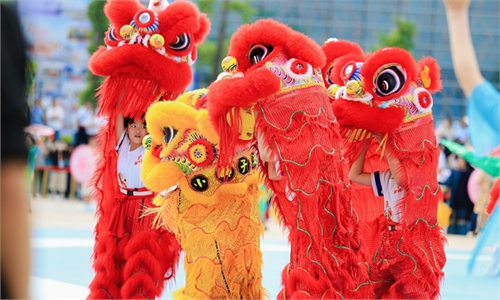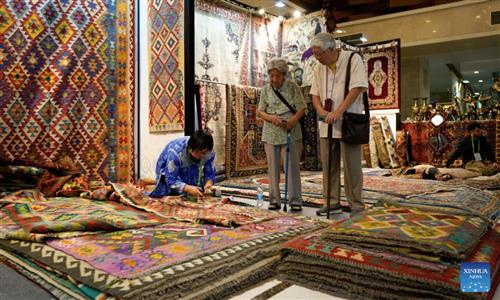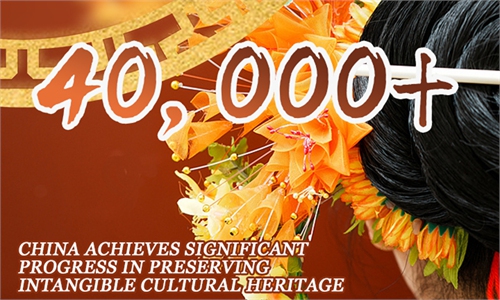ARTS / CULTURE & LEISURE
Creations made of grass showcase straw weaving heritage
Old skills, new voices
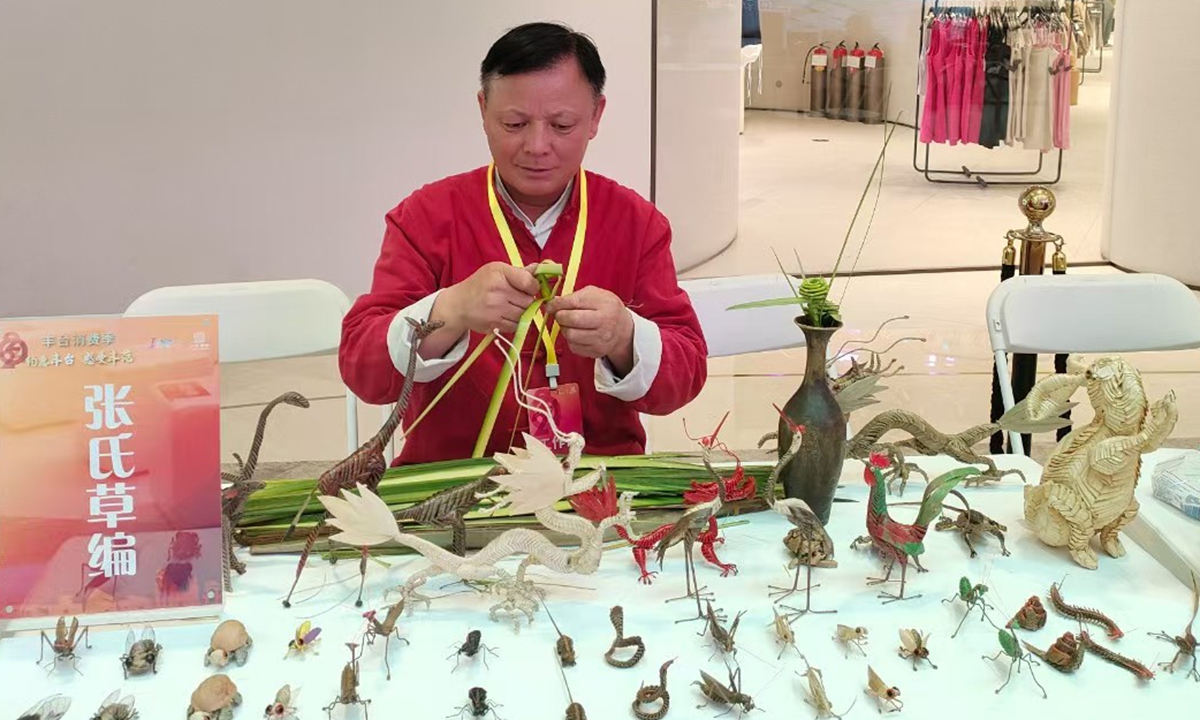
Zhang Bangshou makes straw weaving products in Beijing. Photo: Courtesy of Zhang Bangshou
At a primary school in Beijing, students gathered around an elderly craftsman named Zhang Bangshou, eyes wide with curiosity and hands eager to try. In the middle of the crowd, Zhang had just finished weaving a delicate green butterfly, its wings shaped from slender blades of grass, its antennae knotted with care. Gently, he lifted it to the sunlight, where it shimmered softly in his palm.
Straw weaving is a widely practiced form of traditional Chinese handicraft. Using pliable plant materials such as bulrush and corn husks, artisans create figures that are both practical and aesthetically pleasing. It was included in the second batch of items on China's national intangible cultural heritage list in 2008.
Zhang is an intangible cultural heritage inheritor of the Zhang-style straw weaving tradition. In his hands, even an ordinary blade of grass comes alive — transforming into a fluttering butterfly, a chirping katydid, or even mythical creatures like dragons and snakes, vivid, lifelike, and dynamic.
"The core principle of straw weaving is a dialogue between humans and nature, it's a way to reconnect with the world through one's hands," he told the Global Times. "It relies on techniques like threading, inserting, knotting, and pulling to create vivid forms. This art requires great skill and precision."
An enduring passion
Zhang's love for the craft was shaped by childhood experiences. Growing up in a family where handiwork was part of daily life, he was drawn early on to making things by hand.
"Among the many traditional skills, straw weaving stood out, it was the most 'eco-friendly' pastime of its time, and the one most likely to spark joy in a child's eyes," he said.
As he grew older, this hobby became a profession - and eventually, a lifelong pursuit. Over the decades, Zhang has constantly refined and expanded his techniques, growing the repertoire from dozens to more than a hundred distinct weaving methods.
He recalls his early days working at a friendship store in Beijing, when curious customers would stop to admire the lifelike grasshoppers and crickets he crafted by hand.
"Others sold food, drinks, music tapes, all wildly popular. My work? Not exactly a hot commodity," Zhang said with a smile. "But there were always people willing to pay for it, sometimes even placing orders in advance."
It was when he realized, this craft isn't meant to please everyone. It's for those who truly see its value, and feel something."
In Zhang's view, most students in straw-weaving classes today are simply hobbyists, taking a few lessons out of curiosity.
"Straw weaving is hard to learn, and demands immense patience," he said. "And to be honest, the profit margins are low, it's difficult to support a family on this alone."
"Some young learners quit after just a few sessions, you can't create anything if your mind is restless," he added. "This craft requires stillness, not just of the hands, but of the heart."
Despite these challenges, Zhang has never given up teaching. Determined to keep the tradition alive, he has brought straw weaving into the classrooms of more than a dozen schools across Beijing. His workshops have become some of the most popular sessions in the "intangible heritage into schools" program, combining hands-on creativity with cultural education.
"Maybe they won't become full-time artisans when they grow up," Zhang said, "but if they remember the day they made a grass butterfly with their own hands, then the craft will never disappear."
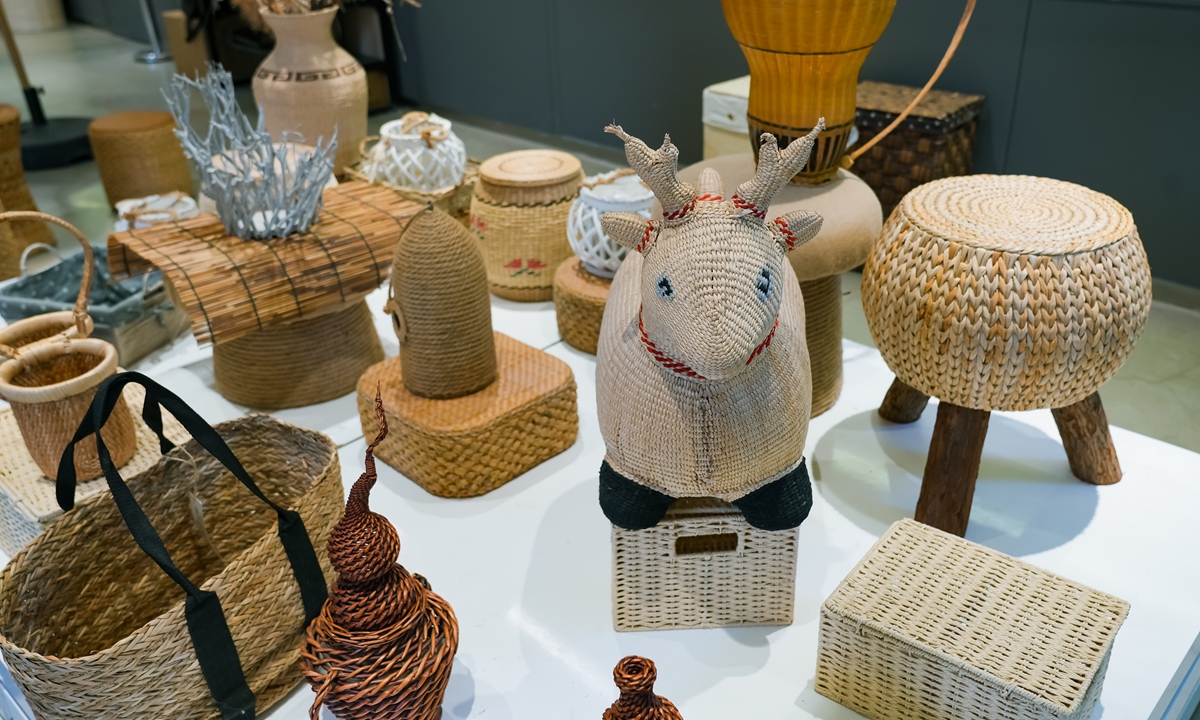
An exhibition featuring straw weaving in Jinan, East China's Shandong Province Photo: VCG
Passing on values
Maciej Pawlak, the president of the Polish wicker weaving association, told the Global Times that he has studied weaving techniques for many years, but what surprised him most was the different materials used in Chinese straw weaving artworks.
"I found out that rattan, corn husks, thatch, and wheat straw can all serve as raw materials for Chinese artists to create woven artworks. Compared to some of our own pieces, the Chinese ones are even more delicate and precise, it truly makes me want to come to China more often to learn," Pawlak said.
Reflecting on intangible cultural heritage, Pawlak emphasized the power of exchange: "The most important thing is training and providing a platform for people in this craft to come together.
"Only by observing each other can we learn and share techniques," he said, emphasizing that weaving is a deeply human skill.
While international guests admired the diversity of traditional materials and designs, experts in China also observed how age-old techniques are evolving at home.
Du Haoran, a Beijing-based expert in cultural and creative industries, told the Global Times that straw weaving in China is undergoing a subtle but steady revival, as younger generations explore new ways to reinterpret traditional techniques.
"Instead of staying frozen in time, traditional crafts are being reimagined through new formats, from digital tutorials and modular teaching kits to creative reinterpretations in product design," Du said. "It's not about turning crafts into factories, but about giving them new life in ways that speak to the next generation."
According to Du, while technology such as digital sketching or basic modeling tools can support design and education, the essence of straw weaving still lies in the artisan's hands and heart.
"Crafts like this teach patience, focus, and respect for nature. These are values worth carrying forward, whether through a classroom workshop or a marketplace booth," he said.
